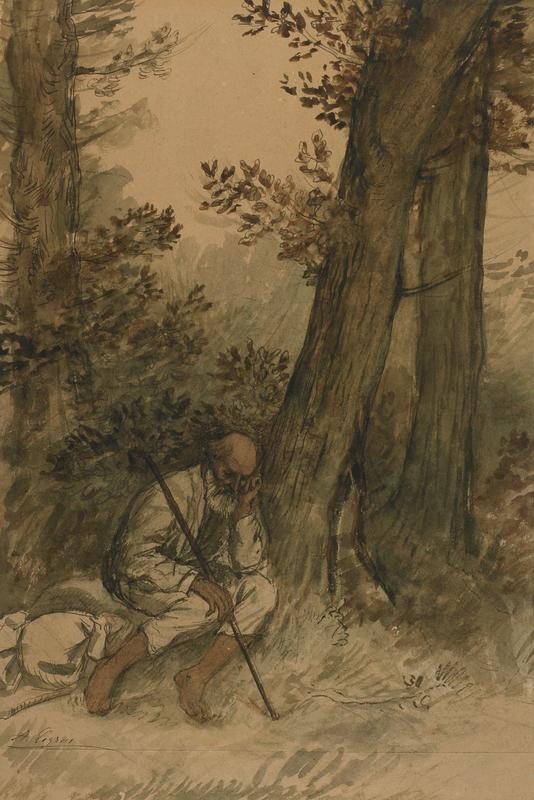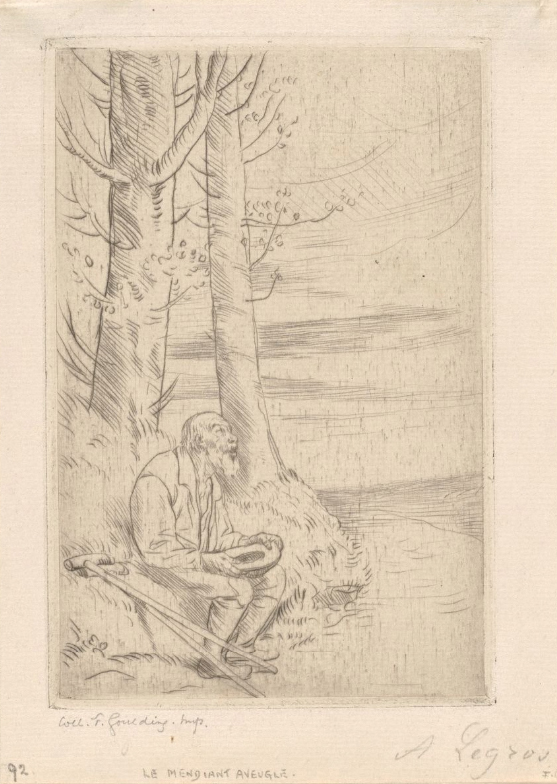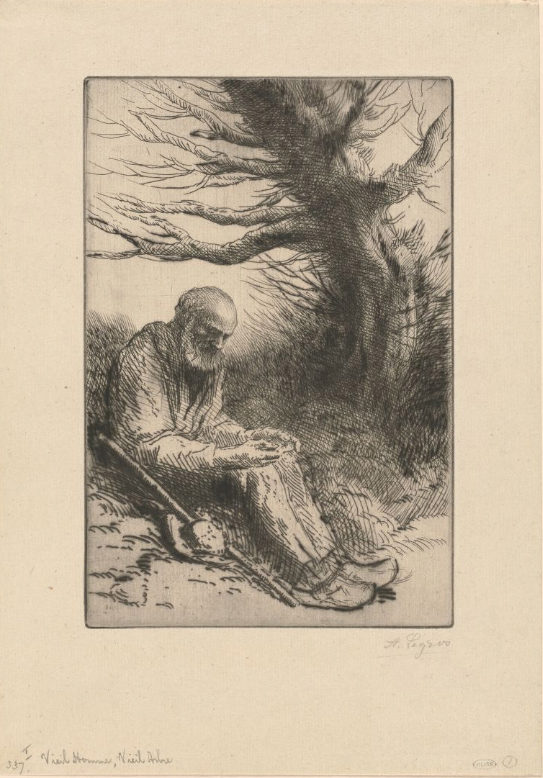
105. Alphonse Legros, Old Vagabond Seated in a Forest
| Artist | Alphonse Legros, French, Dijon 1837–Watford, England 1911 |
| Title, Date | Old Vagabond Seated in a Forest, c. 1870s |
| Medium | Watercolor with brush and ink on cream paper |
| Dimensions | 18 1/2 × 11 1/2 in. (47 × 29.2 cm) |
| Inscriptions + Marks | Lower left: A. Legros |
| Provenance | [Galerie Marcel Lecomte, Paris, until 1975; to Weisberg]; Yvonne and Gabriel Weisberg, Minneapolis |
| Exhibition History | "The Quieter Image: 19th Century European Drawings and Watercolors," Carleton Art Gallery, Carleton College, Northfield, Minn., 1996, no. 31; "Artist as Narrator: Nineteenth Century Narrative Art in England and France," Oklahoma City Museum of Art, 2005; "Expanding the Boundaries: Selected Drawings from the Yvonne and Gabriel P. Weisberg Collection," Mia (2008) and Snite Museum of Art, Notre Dame, Ind. (2010) |
| References | Hardy George et al., "Artist as Narrator: Nineteenth Century Narrative Art in England and France" (exh. cat.), Oklahoma City Museum of Art (Oklahoma City, 2005), p. 45, no. 53, ill.; Lisa Dickinson Michaux with Gabriel P. Weisberg, "Expanding the Boundaries: Selected Drawings from the Yvonne and Gabriel P. Weisberg Collection" (exh. cat.), Minneapolis Institute of Arts (Minneapolis, 2008), pp. 39–40, fig. 20 |
| Credit Line | Promised gift of Gabriel P. and Yvonne M.L. Weisberg, Minneapolis |
Like many nineteenth-century artists in France and Belgium, Alphonse Legros often focused on the less fortunate. Just as François Bonvin showed his empathy in images of beggars or vagabonds living on the refuse of the wealthy members of society, so, too, did Legros. But while Bonvin focused on people struggling in the city, Legros concentrated on the countryside. He was interested in those who, after making a living from the land as their forebears had for centuries, saw their livelihoods as farmers, woodcutters, and more erased by burgeoning industry. Destitute, they roamed the countryside and forests, and Legros recorded what he saw.

Legros used the theme of the vagabond to emphasize the fate of the disenfranchised. In some etchings, he focused on the vagabond as a beggar, often a blind beggar (figs. 1–2).1 He and fellow artists looked to artists such as Rembrandt (1606–1669) and authors such as Jean de La Fontaine (1621–1695) for inspiration, and for reminders that poor people had always been part of society.2

The present drawing shows a despairing figure seated on the ground at the edge of a forest. He is worn out from his wanderings. Beside him are his bundled clothes, which he ties to a wooden staff and carries over his shoulder. Legros’s many images of destitute figures such as this helped reinforce his position as an advocate for those beaten down and living without hope.
GPW
Notes
For example, see Paul Emmanuel Auguste Poulet-Malassis and Alphonse Wyatt Thibaudeau, Catalogue raisonné de l’oeuvre gravé et lithographié de Alphonse Legros (Paris: C. J. Baur, 1877), nos. 92 and 337. ↩︎
Legros made an etching based on Jean de La Fontaine’s poem Death of the Woodcutter. See Poulet-Malassis and Thibaudeau, no. 142. ↩︎